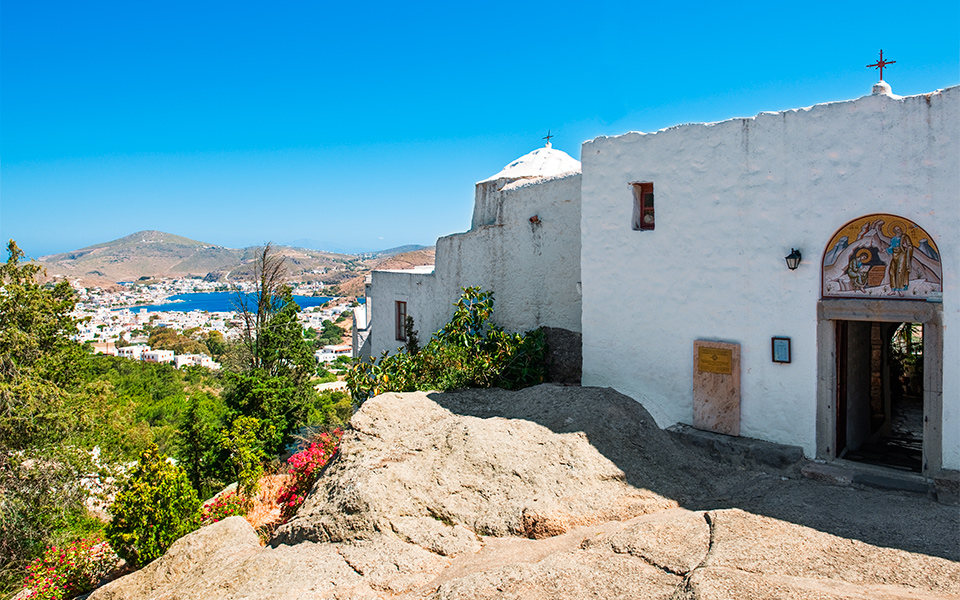Leros: The Underrated Greek Island that Has It...
Discover Leros, a hidden Greek island...

The Monastery of Saint John the Theologian, thanks to which Patmos has preserved a quieter, gentler feeling.
© Shutterstock
It’s been eight years, but I still remember my first swim at Grikos, a sheltered cove on the southeastern coast of Patmos. It was late June, just before dusk, and I stopped for a moment as I walked across the fine sand in front of the old Xenia Hotel just to take in the scene.
Pink clouds accompanied my every step. On my right, a straight row of proud tamarisk trees seemed to point me in the direction of Kallikatsos, a mysterious rock with an almost magnetic power.
Directly across, behind dozens of sailboats, the uninhabited islet of Tragonisi was stopping the winds from buffeting the fishing village, while just a bit off to the left, I could see Hiliomodi, a tiny islet topped by a chapel dedicated to Panteleimon, the All-Merciful.
It was the perfect Aegean scene, and so quiet that all you could hear were the cries of the seabirds. I took a cleansing dive into the chilly water and, in that one instant, rid myself of all the accumulated cares of the winter.

A short break on the way to the monastery.
© Perikles Merakos
It is such postcard moments, snapshots you can call up from memory when you need to give your mind a rest, that the Ιsland of the Apocalypse offers with such amazing generosity.
The dynamic yet discreet presence of the Monastery of Saint John the Theologian has prevented Patmos from turning into a hive of beach bars; in fact, there’s almost no music on its beaches at all. This delicious quiet combines wonderfully with the delicate sophistication of Hora, the island’s main town, high on its perch up in the hills.
Hora, which seems to be snuggling up against the walls of the castle-monastery, is full of two-story houses with whitewashed courtyards and jasmine plants that climb up their walls and intoxicate nocturnal passersby with their heady fragrance. The houses are connected by a labyrinth of low-lying archways and secret passages once designed to protect the island’s inhabitants from marauding pirates.
After the obligatory visit to the Cave of Apocalypse and the monastery – where you should tour the library, a trove of 11th-century treasures – there is little reason to stay in Hora much longer during the day. The nights, however, will almost inevitably bring you here, as this is the place to wander pretty whitewashed streets, to enjoy traditional Greek food at one of the eateries on the main square – if you haven’t already found a nice seaside taverna – and to quaff a refreshing cocktail at one of its admittedly cool bars, where you may even come across sheikhs traveling incognito, or artists looking for inspiration for their next project.
These enchanting outings in Hora are like that swim at Grikos: occasions where you’re dreaming with open eyes.
Discover Leros, a hidden Greek island...
Unspoiled beaches, authentic flavors, and a...
With its beautiful olive groves, emerald...
From family traditions to modern innovation,...